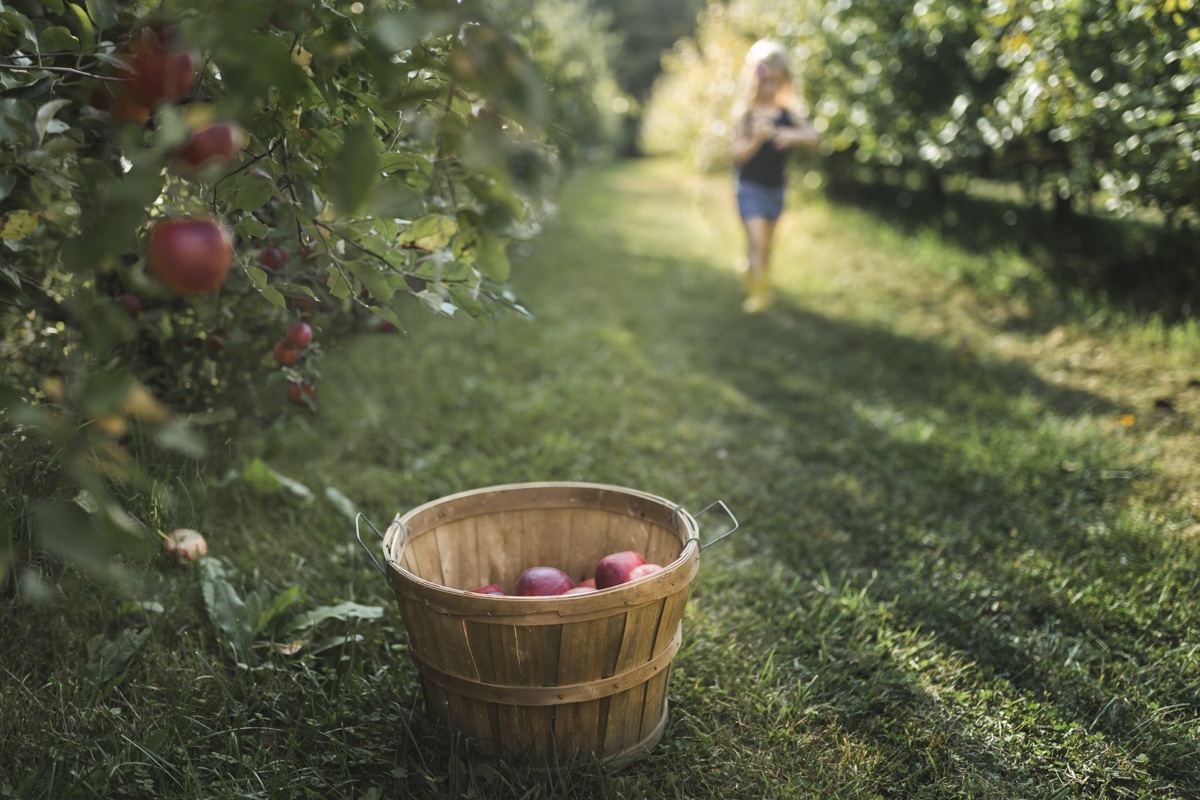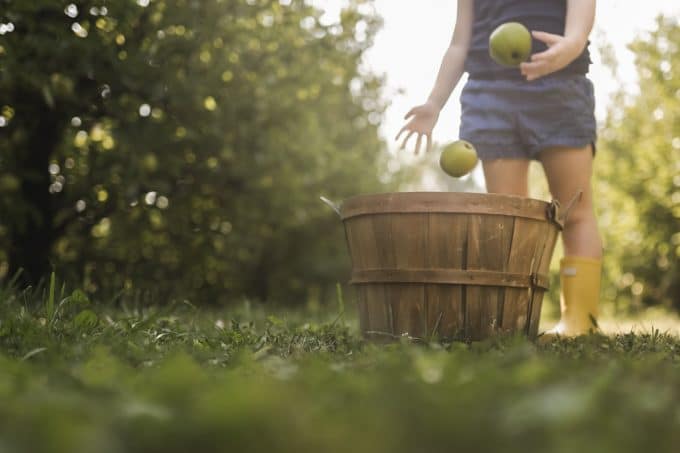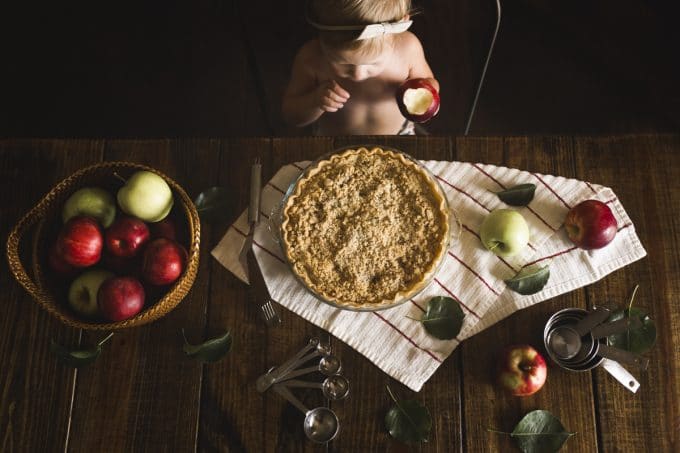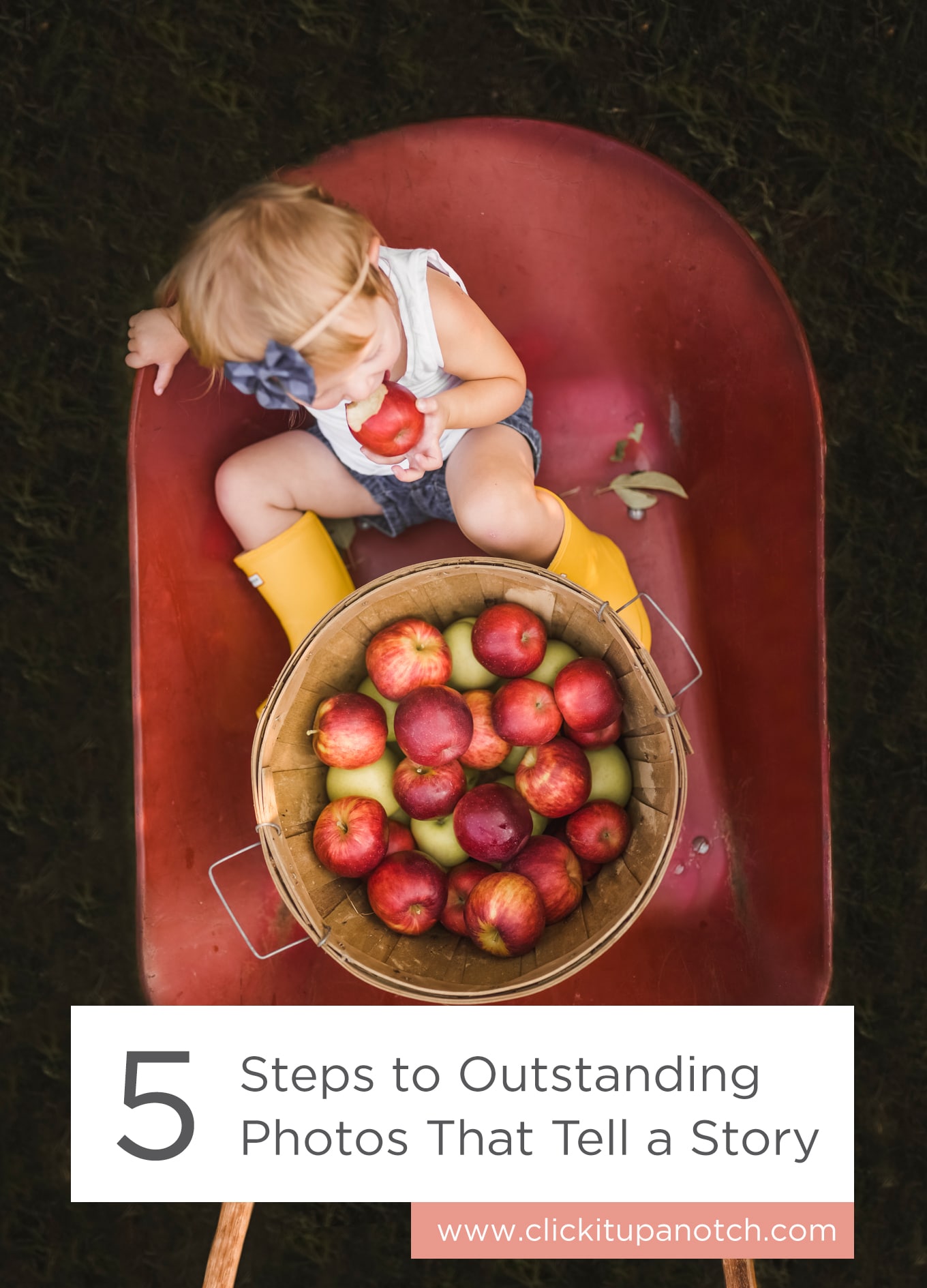One of my favorite photography quotes is “every picture tells a story.” But we all know there is more to documenting an event or an outing than just clicking that shutter. When we pick up our cameras and snap a photo, we are trying to take photos that tell a story.
The goal is to be able to look back on that image or images years from now and remember exactly how we felt in that moment – to remember the story.
How to Take Photos That Tell a Story
So, how do we do this? How do we take pictures that tell a story? Here are some tips to help you take your images from boring snapshots to amazing stories.
Read more: Storytelling Through Light, Emotion and Composition
Plan Out Photos You Want to Capture
If I am headed on an outing with my family, such as a trip to the apple orchard as you’ll see throughout this article, I often think about the photos that tell a story of our adventure.
These ideas are not something I will stage or force to happen, but they are the moments that I can anticipate occurring on the outing that I want to be prepared to capture.
Obviously, there will be moments that cannot be anticipated, especially when children are involved, and sometimes those make some of the best photos.
However, even in these candid moments, some of the other tips below are going to be important to help your pictures be more than just snapshots.

On our annual fall trip to the apple orchard, I knew that my daughters would want to ride in the wheelbarrow, so this was an image that I had in my head to be prepared to capture.
Sure enough, all of my kids wanted a turn riding in the wheelbarrow. So when the moment presented itself, I was prepared for how I wanted to capture it.

Birth photography is another time when details and story telling are so important here are my 8 Best Tips for Beautiful Birth Photography
Scope out the Scene
When I first arrive at a destination where I plan to take photos, the first thing I do is take a look around. I look at the setting and potential photo spots. The setting is going to add context to the story.
I check out where the light is and consider how I want the light to play a role in the story. The light will significantly affect the mood of an image.
For example, consider a photo of a child crying. The photo would create much more of an emotional response to the viewer if the lighting was more dramatic, such as a low light situation.
So, while I don’t always have control of my surroundings, I may make some decisions upon arrival that will help set the mood in the images or assist in telling the story.
Read more: 6 Tips for Storytelling Photography

When we went apple picking, I made note of where the light was and chose a spot for our family to pick apples that would be complementary to the photos I was taking.
I knew I wanted the light to come from a certain angle, so I positioned myself such that the light was in that spot, and I positioned any items that would be involved in the story exactly where I wanted them (ie. The wheelbarrow and apple basket).
When my son reached up to pull an apple from the tree, the leaves provided the most gorgeous golden bokeh which helped take this otherwise ordinary image to something more beautiful.
Read more: How to use your f-stop to create amazing photos

Details vs. Landscape for Photos That Tell a Story
When I am taking photos of my family on an outing, I try to make sure to get a mixture of both wide angle, landscape photos that show the whole setting/scene, as well as closer up, detailed shots, because both are important to the story.
Notice in the photo below, I chose to focus on the apple that my one-year old daughter had brought me, but I also included her face in the background.
Even though her face is blurry and the focus of the image is the apple, including her face adds to the story showing just how proud she was of picking that apple all by herself.
Read more: – Take your story to another level

Add Some Interest
There are several ways you can add some interest to an otherwise ordinary photo.
- Try changing your angle or perspective.
- Get down low if photographing a crawling child to show the world from their perspective.
- Shoot from above (one of my favorites) to show more of the scene as it lays out before you.
- Add something to the foreground that adds to the story such as shooting through a doorway or around another person. Try an interesting crop or even a faceless photo. Read more about framing: 4 Unique Framing Photography Composition Ideas for Creative Photos
- Shoot with intentional blur or even freelens to add a dreamy effect to the photo.
- Capturing movement? – play with your shutter speed to freeze motion or slow it down to create a panning/motion blur effect.

In the picture below, I got down very low to the ground as my daughter was tossing the apples into the basket. Her face wasn’t important to the story, so I didn’t include it in the image as the focus was the tossing of the apples.

Remember ALL of the Elements of a Story
Every story has a beginning, a middle, and an end. And while it may be hard to document a sequence of events in a single photograph, these elements are important to remember when taking a series of photos that are telling a story.
Consider documenting getting in/out of the car or the excitement walking up to your destination. Document all the details of your outing while there, obviously, but don’t forget about the end as well.
Our apple picking adventure ended with the baking of a delicious apple pie, so I chose to include that in my story.

Most importantly, after you feel like you have the photos you need to remember everything about your time that day, put your camera down and make some memories with your family.
Make sure that your children/family remember seeing YOU that day and not just your camera. Bonus points if you hand your camera to someone else and get in some photos yourself.
Don’t forget to print your photos in a photobook.
Discover more tips for taking photos that tell a story









Congrats Jamie!! I love your storytelling! ❤️❤️
These are amazing tips Jamie. Loved watching your stories unfold.
Nice blog!
I especially liked the photo of the Apple basket and your daughter walking in the background,